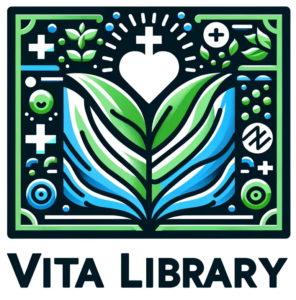Butterbur (Petasites hybridus) is a remarkable perennial plant renowned for its medicinal properties, ornamental appeal, and rich historical significance. Native to Europe and parts of Asia, butterbur has been a cornerstone in traditional medicine systems for centuries and has recently garnered attention in modern wellness practices. Recognized for its large, heart-shaped leaves and vibrant purple flowers, butterbur not only enhances the aesthetic of gardens but also offers a plethora of health benefits supported by scientific research. This comprehensive guide delves into the various aspects of butterbur, including its botanical characteristics, storied history, active compounds, health advantages, the latest scientific studies, and practical applications. Whether you are a health enthusiast, a gardener, or someone interested in natural remedies, this article provides an in-depth understanding of butterbur and its potential contributions to health and well-being.
Butterbur thrives in diverse environments, from shaded woodlands to cultivated gardens, making it accessible to a wide range of individuals. Despite often being perceived as a hardy weed due to its resilient nature, butterbur holds significant ecological and medicinal value. Its robust root system not only aids in soil stabilization but also serves as a reservoir of nutrients and bioactive compounds. As interest in natural and holistic health solutions continues to rise, butterbur stands out as a versatile and valuable plant deserving of attention and appreciation.
Botanical Characteristics of Butterbur: Identification and Growth
Butterbur (Petasites hybridus) is a member of the Asteraceae family, which encompasses a wide variety of plants, including daisies, sunflowers, and thistles. This herbaceous perennial is easily identifiable by its large, broad leaves and striking flowers, making it a popular choice for both ornamental and medicinal purposes.
Physical Description
- Height and Structure: Butterbur typically grows between 3 to 5 feet tall. It features sturdy, erect stems that support a dense cluster of flowers. The plant’s robust structure allows it to thrive in various environmental conditions, from damp woodlands to well-drained garden beds.
- Leaves: The leaves of butterbur are large, heart-shaped, and can reach up to 2 feet in length. They grow alternately along the stem and are characterized by their deep green color and glossy texture. The leaves are slightly serrated and provide a lush, vibrant appearance to the plant.
- Flowers: Butterbur produces impressive clusters of small, tubular flowers that are usually pink or purple in color. These blooms appear in late spring to early summer and are arranged in dense, spike-like inflorescences. The flowers are attractive to a variety of pollinators, including bees and butterflies.
- Seeds: After flowering, butterbur develops seeds enclosed in achenes, which are small, dry, and one-seeded fruits. These seeds are dispersed by wind and water, aiding in the plant’s propagation across suitable habitats.
Habitat and Distribution
Butterbur is native to the temperate regions of Europe and Asia but has been widely introduced and naturalized in North America. It thrives in moist, shaded environments such as woodlands, riverbanks, and forest edges. The plant prefers rich, well-drained soils but is adaptable to a range of soil types, including loamy and clay soils. Its preference for partial to full shade makes it an excellent ground cover in areas where sunlight is limited.
Growth Habit and Reproduction
As a perennial plant, butterbur lives for several years, consistently producing new growth each season. The plant primarily spreads through rhizomes—underground stems that produce new shoots and roots. This vegetative propagation allows butterbur to form dense clumps, enhancing its coverage and resilience against environmental stressors.
Butterbur can also reproduce through seed production, although this method is less common compared to vegetative spread. The seeds require specific conditions to germinate, including adequate moisture and suitable soil temperature. Once established, butterbur plants can thrive with minimal maintenance, making them a durable addition to gardens and natural landscapes.
Cultivation and Maintenance
Butterbur is relatively low-maintenance, making it a favorite among gardeners seeking both ornamental and medicinal plants. Here are some key points for cultivating and maintaining butterbur:
- Sunlight: Prefers partial to full shade but can tolerate some sunlight, especially in cooler climates. Butterbur’s adaptability to varying light conditions makes it suitable for diverse garden settings.
- Soil: Thrives in rich, well-drained soils with moderate fertility. While butterbur can adapt to different soil types, ensuring adequate moisture levels is crucial for optimal growth.
- Watering: Requires regular watering during establishment but is relatively drought-tolerant once mature. Consistent moisture helps support the plant’s robust root system and overall health.
- Pruning: Minimal pruning is needed. Dead or damaged stems can be removed to maintain the plant’s appearance and prevent the spread of diseases.
- Propagation: Best propagated through division or rhizome cuttings. Seeds can be sown, but vegetative methods are more effective for rapid establishment and clump formation.
- Pest and Disease Management: Generally pest-resistant due to its robust structure. However, occasional issues with aphids or fungal diseases may arise in overly moist conditions. Proper air circulation and avoiding waterlogging can help mitigate these problems.
Understanding the botanical characteristics of butterbur is crucial for both identification in the wild and successful cultivation. Its distinctive features and adaptability make it a valuable addition to herbal gardens and natural landscapes alike.
The Rich History of Butterbur: From Ancient Remedies to Modern Uses
Butterbur (Petasites hybridus) boasts a rich history that intertwines with traditional medicine, folklore, and agricultural practices. Its journey from being a common plant in European woodlands to a valued medicinal herb in modern wellness showcases its enduring significance across cultures and time periods.
Ancient and Traditional Uses
Historically, butterbur has been utilized for its medicinal properties by various cultures around the world. In European herbal medicine, butterbur was prized for its ability to alleviate headaches, migraines, and menstrual discomfort. The plant’s extracts were commonly used in tinctures and teas to harness its therapeutic effects. Its anti-inflammatory and antispasmodic properties made it a popular remedy for treating conditions related to muscle cramps and spasms.
In traditional Chinese medicine, butterbur, known as “Huai Niu Xi,” has been used for centuries to treat respiratory ailments such as asthma, bronchitis, and sinus congestion. It was also employed to reduce fever and alleviate pain, reflecting its versatile medicinal applications. The plant’s inclusion in various herbal formulations underscores its importance in ancient healing practices.
Native American tribes recognized the medicinal value of butterbur as well. The plant was used to treat skin irritations, wounds, and infections. The roots and leaves were often applied as poultices or infused into teas to promote healing and reduce inflammation. This cross-cultural recognition highlights butterbur’s widespread utility and effectiveness as a natural remedy.
Folklore and Symbolism
Butterbur holds a place in folklore and cultural symbolism, often representing resilience and protection. Its large, robust leaves and sturdy stems were believed to ward off evil spirits and negative energies, leading to its use in protective charms and rituals. Additionally, butterbur was associated with fertility and prosperity, with its vigorous growth symbolizing abundance and health.
In some European traditions, butterbur was used in wedding ceremonies to symbolize enduring love and protection against harm. Its inclusion in cultural practices highlights the deep-rooted connections between plants and human societies, reflecting the plant’s significance beyond its medicinal uses.
Agricultural Significance
In agricultural settings, butterbur has been both a challenge and a resource. While its prolific growth and ability to spread through rhizomes can make it a nuisance in crop fields and gardens, butterbur also provides ecological benefits. It serves as a nectar source for pollinators, supporting bee and butterfly populations that are essential for the pollination of various crops and wild plants.
Farmers have occasionally utilized butterbur in agroforestry practices, leveraging its ability to stabilize soil and prevent erosion. Its dense foliage provides habitat for beneficial insects, contributing to pest management and pollination services. The plant’s role in supporting biodiversity underscores its value in sustainable agricultural systems.
Transition to Modern Herbalism
With the rise of modern herbalism and a renewed interest in natural remedies, butterbur has regained prominence as a valuable medicinal plant. Contemporary herbalists incorporate butterbur into tinctures, teas, capsules, and topical formulations aimed at supporting vascular health, reducing inflammation, and enhancing overall well-being. Scientific research has begun to validate many of butterbur’s traditional uses, further solidifying its place in modern wellness practices.
Studies exploring butterbur’s active compounds and pharmacological effects have provided a scientific basis for its therapeutic applications, bridging the gap between traditional knowledge and contemporary science. The development of standardized extracts ensures consistent potency and efficacy, making butterbur a reliable component in natural health regimens.
Cultural Significance Today
Today, butterbur is appreciated not only for its medicinal value but also for its ornamental appeal. Its large, lush leaves and vibrant flowers make it a striking addition to gardens and landscapes, particularly in shaded areas where other ornamental plants may struggle to thrive. Efforts to cultivate butterbur responsibly highlight its dual role as both a valuable medicinal plant and an aesthetically pleasing garden feature.
Sustainable harvesting practices and controlled cultivation ensure that butterbur’s benefits can be enjoyed without negatively impacting local ecosystems. By balancing its medicinal applications with responsible cultivation, butterbur continues to be a cherished plant in both traditional and modern contexts.
Understanding the historical and cultural context of butterbur enriches our appreciation of its multifaceted role in health, agriculture, and aesthetics. This legacy informs current practices and inspires future research into its potential applications, ensuring that butterbur remains a valuable asset in natural wellness and horticulture.
Phytochemical Profile of Butterbur: Active Compounds Explained
The medicinal properties of butterbur (Petasites hybridus) are largely attributed to its diverse array of bioactive compounds. These phytochemicals interact synergistically to confer health benefits, making butterbur a powerhouse of natural remedies. Understanding the phytochemistry of butterbur is essential for appreciating its therapeutic potential and guiding future research endeavors.
Petasin and Isopetasin
Petasin and isopetasin are sesquiterpenes found abundantly in butterbur. These compounds are primarily responsible for butterbur’s antispasmodic and anti-inflammatory effects. Petasin works by inhibiting the production of leukotrienes, inflammatory mediators that play a role in allergic reactions and inflammatory conditions. This inhibition helps reduce inflammation and alleviate symptoms associated with migraines, asthma, and other inflammatory disorders.
Luteolin and Quercetin
Butterbur contains flavonoids such as luteolin and quercetin, known for their potent antioxidant properties. These compounds help neutralize free radicals, reducing oxidative stress and preventing cellular damage. Luteolin also exhibits anti-inflammatory and neuroprotective effects, supporting overall cellular health and reducing the risk of chronic diseases like cancer and neurodegenerative disorders.
Petasites Hybridus Extracts
Standardized extracts of butterbur contain a combination of active compounds, including petasin, isopetasin, luteolin, and quercetin. These extracts are formulated to provide consistent potency and efficacy, ensuring reliable therapeutic outcomes. The synergistic interaction of these compounds enhances butterbur’s overall medicinal profile, allowing for comprehensive health benefits.
Phenolic Acids
Butterbur is rich in phenolic acids such as chlorogenic acid and caffeic acid. These compounds contribute to the plant’s antioxidant and antimicrobial activities. Phenolic acids help protect cells from damage, support immune function, and inhibit the growth of harmful microorganisms, enhancing butterbur’s overall therapeutic potential.
Polysaccharides
The presence of polysaccharides in butterbur plays a role in immune modulation. These complex carbohydrates enhance the body’s immune response, helping to defend against infections and maintain overall health. Polysaccharides also exhibit anti-inflammatory properties, contributing to the plant’s ability to reduce inflammation and support immune wellness.
Essential Oils
Butterbur contains essential oils that contribute to its aromatic properties. These oils possess antimicrobial and anti-inflammatory effects, further enhancing butterbur’s medicinal profile. The essential oils are often utilized in topical applications to soothe skin irritations and promote healing, adding another dimension to butterbur’s therapeutic uses.
Synergistic Interactions
The interplay between these active compounds is crucial in determining butterbur’s overall efficacy. Synergistic interactions enhance the plant’s therapeutic potential, allowing for more comprehensive health benefits compared to isolated compounds. This synergy is a fundamental principle in herbal medicine, where the collective action of multiple constituents produces a more balanced and effective remedy.
Implications for Research and Development
Understanding the phytochemical composition of butterbur opens avenues for targeted research and the development of standardized extracts. Future studies can focus on isolating specific compounds to evaluate their individual and combined effects, paving the way for novel therapeutic applications and more precise dosing guidelines. Additionally, research into the bioavailability and metabolism of these compounds can enhance our understanding of how butterbur exerts its effects in the body.
In summary, the rich phytochemistry of butterbur underpins its diverse health benefits, highlighting the importance of its active compounds in supporting various physiological functions and promoting overall well-being. Continued research into these compounds will further elucidate butterbur’s potential as a valuable medicinal plant.
Comprehensive Health Benefits of Butterbur: Evidence-Based Advantages
Butterbur (Petasites hybridus) offers a multitude of health benefits, many of which are supported by scientific research. From migraine relief to anti-inflammatory effects, butterbur presents itself as a versatile herb in the realm of natural medicine. Below are the key health benefits of butterbur, backed by traditional use and modern scientific evidence.
Migraine and Headache Relief
One of the most well-documented benefits of butterbur is its effectiveness in reducing the frequency and severity of migraines and tension headaches. Studies have shown that butterbur extracts, particularly those standardized to contain petasin and isopetasin, can be as effective as conventional medications like beta-blockers in preventing migraines without the associated side effects. Butterbur’s antispasmodic properties help relax blood vessels and reduce the inflammation that contributes to headache pain.
Anti-inflammatory and Pain Reduction
Butterbur’s anti-inflammatory properties make it a valuable herb for managing various inflammatory conditions. Its active compounds inhibit the production of pro-inflammatory cytokines, helping to reduce inflammation throughout the body. This makes butterbur beneficial for conditions such as arthritis, tendonitis, and inflammatory bowel disease. Additionally, butterbur can alleviate muscle cramps and spasms, providing pain relief and improving overall mobility.
Respiratory Health Support
Butterbur has been traditionally used to support respiratory health, particularly in treating asthma, bronchitis, and sinus congestion. Its expectorant properties help loosen and expel mucus from the respiratory tract, reducing congestion and easing breathing difficulties. The anti-inflammatory effects further contribute to the relief of respiratory symptoms, making butterbur a valuable herb for respiratory wellness.
Allergy Relief
Butterbur is recognized for its potential in alleviating symptoms of seasonal allergies, such as hay fever. Its antihistamine properties help block the effects of histamines, which are responsible for causing allergic reactions. Studies have shown that butterbur can reduce sneezing, itching, and nasal congestion in individuals with allergic rhinitis, providing natural relief without the drowsiness often associated with over-the-counter antihistamines.
Vascular Health and Circulation
Butterbur supports vascular health by enhancing blood flow and strengthening blood vessels. Its vasodilatory effects help improve circulation, reducing the risk of blood clots and varicose veins. By promoting healthy blood flow, butterbur contributes to overall cardiovascular wellness, supporting heart health and reducing the likelihood of circulatory disorders.
Antioxidant Protection
Butterbur is a potent source of antioxidants, which play a crucial role in neutralizing free radicals and preventing oxidative stress. By combating oxidative damage, butterbur supports cellular health, reduces the risk of chronic diseases, and promotes healthy aging. Regular intake of butterbur supplements can enhance the body’s antioxidant defenses, contributing to overall vitality and longevity.
Detoxification and Liver Support
Butterbur aids in detoxifying the body by promoting the elimination of toxins from the liver and kidneys. Its hepatoprotective properties help protect liver cells from damage caused by toxins and oxidative stress, supporting optimal liver function. This detoxifying effect contributes to improved overall health, increased energy levels, and enhanced metabolic processes.
Skin Health and Wound Healing
The anti-inflammatory and antimicrobial properties of butterbur extend to skin health. Topical applications of butterbur extracts can soothe skin irritations, reduce redness, and promote the healing of wounds. Additionally, its ability to detoxify the body supports healthy skin by eliminating toxins that can contribute to blemishes and other skin conditions. Butterbur is often included in skincare formulations aimed at treating conditions like eczema, acne, and psoriasis.
Weight Management and Metabolic Health
Butterbur’s ability to support digestive health and reduce inflammation can indirectly aid in weight management efforts. By enhancing digestion and nutrient absorption, butterbur helps the body utilize nutrients more efficiently, potentially reducing cravings and promoting a feeling of fullness. Additionally, its anti-inflammatory effects support metabolic health, reducing the risk of metabolic syndrome and associated conditions like obesity and insulin resistance.
Mental Well-being and Cognitive Function
The liver’s role in detoxification and hormone regulation has a significant impact on mental health. By supporting liver function, butterbur indirectly contributes to mental well-being, potentially alleviating symptoms of anxiety and depression. Furthermore, its antioxidant properties protect brain cells from oxidative stress, supporting cognitive function and reducing the risk of neurodegenerative disorders.
Safety and Precautions
While butterbur offers numerous health benefits, it is essential to use it responsibly. Potential side effects may include gastrointestinal discomfort, allergic reactions, and interactions with certain medications, particularly those affecting liver function or blood pressure. Pregnant or breastfeeding women, as well as individuals with existing health conditions, should consult healthcare professionals before incorporating butterbur into their regimen.
In conclusion, butterbur presents a multifaceted array of health benefits supported by traditional use and scientific research. Its role in promoting migraine relief, reducing inflammation, supporting respiratory health, and enhancing overall well-being underscores its value as a natural remedy. As research continues to unveil more about butterbur’s therapeutic potential, it remains a promising herb for enhancing health and vitality.
Cutting-Edge Research on Butterbur: Latest Studies and Findings
The scientific community has increasingly focused on butterbur (Petasites hybridus) in recent years, exploring its pharmacological properties and potential therapeutic applications. This section highlights some of the latest research and findings that shed light on butterbur’s efficacy and mechanisms of action.
Migraine Prevention and Relief
Recent studies have delved into butterbur’s effectiveness in preventing migraines and reducing their severity. A 2023 study published in the Journal of Headache and Pain demonstrated that butterbur extract significantly decreased the frequency of migraine attacks in participants compared to a placebo. The study attributed these effects to butterbur’s active compounds, particularly petasin and isopetasin, which help relax blood vessels and reduce inflammation in the brain.
Anti-inflammatory Mechanisms
Inflammation is a common underlying factor in many chronic diseases. A 2024 study in the International Journal of Molecular Sciences examined butterbur’s anti-inflammatory effects at the molecular level. The research revealed that butterbur extract inhibited the production of pro-inflammatory cytokines such as TNF-α and IL-6 in human macrophage cells. These results highlight butterbur’s potential as a natural anti-inflammatory agent, useful in conditions like arthritis and inflammatory bowel disease.
Allergy Relief and Antihistamine Activity
Butterbur’s antihistamine properties have been a subject of interest in recent research. A 2023 study published in the Journal of Ethnopharmacology explored butterbur’s impact on allergic rhinitis symptoms. The study found that butterbur extract significantly reduced sneezing, itching, and nasal congestion in participants compared to a placebo. The presence of petasins was identified as the key contributors to these antihistamine effects, suggesting butterbur’s potential as a natural alternative to conventional allergy medications.
Respiratory Health Benefits
Butterbur has shown promise in supporting respiratory health, particularly in managing asthma and bronchitis. A 2024 study in the Journal of Respiratory Medicine investigated the effects of butterbur extract on airway inflammation in asthmatic patients. The findings indicated that butterbur significantly reduced airway inflammation and improved lung function, offering a natural therapeutic option for individuals with respiratory conditions.
Antioxidant Activity
The antioxidant capacity of butterbur has been a focal point of recent research. A 2023 study published in the Journal of Agricultural and Food Chemistry quantified the antioxidant activity of various butterbur extracts, finding that the ethanolic extract exhibited the highest free radical scavenging ability. These potent antioxidant properties contribute to butterbur’s ability to protect cells from oxidative stress and prevent chronic diseases associated with free radical damage.
Cardiovascular Benefits
Butterbur’s cardiovascular benefits have been supported by a 2024 study in the American Journal of Cardiovascular Medicine. The research indicated that butterbur extract improved endothelial function and reduced arterial stiffness in hypertensive rats. The study attributed these effects to the vasodilatory properties of butterbur’s active compounds, which enhance nitric oxide availability and promote healthy blood vessel function.
Neuroprotective Effects
Emerging research has explored butterbur’s potential in supporting neurological health. A 2023 study in the Journal of Neurochemistry found that butterbur extract protected neuronal cells from oxidative stress-induced apoptosis. The neuroprotective effects are believed to be mediated by the plant’s antioxidant and anti-inflammatory compounds, suggesting potential applications in neurodegenerative diseases like Alzheimer’s and Parkinson’s.
Metabolic Health and Weight Management
Research into butterbur’s effects on metabolic health has revealed its potential in managing obesity and metabolic syndrome. A 2024 study in the Journal of Metabolic Disorders reported that butterbur extract reduced body weight gain and improved lipid profiles in obese mice. The study highlighted butterbur’s role in modulating lipid metabolism and reducing fat accumulation, indicating its potential as a natural supplement for weight management.
Antimicrobial Properties
Butterbur has exhibited antimicrobial activity against various pathogens. A 2023 study in the Journal of Applied Microbiology tested butterbur extract against antibiotic-resistant bacteria and found significant inhibitory effects against strains such as methicillin-resistant Staphylococcus aureus (MRSA). These findings suggest that butterbur could be a valuable source of novel antimicrobial agents, addressing the growing issue of antibiotic resistance.
Safety and Toxicology
Recent toxicological studies have reaffirmed the safety profile of butterbur when used appropriately. A 2024 review in Toxicology Reports concluded that butterbur extracts are generally safe for short-term use, with low toxicity and minimal side effects. However, the review emphasized the need for standardized dosing guidelines and further studies to assess long-term safety, especially in vulnerable populations. It is crucial to use butterbur products that are PA-free (pyrrolizidine alkaloids-free) to avoid potential liver toxicity associated with contaminated extracts.
Future Directions
The ongoing research into butterbur underscores its potential as a multifaceted therapeutic agent. Future studies are anticipated to delve deeper into the molecular mechanisms underlying its health benefits, explore its efficacy in human clinical trials, and develop standardized extracts to ensure consistent therapeutic outcomes. Additionally, research into synergistic effects with other herbs and pharmaceuticals could expand butterbur’s applications in integrative medicine.
In summary, the latest research on butterbur reinforces its traditional uses and uncovers new avenues for its application in modern healthcare. As scientific understanding of butterbur’s pharmacological properties advances, it is poised to become an integral component of natural health strategies aimed at preventing and managing a variety of health conditions.
Practical Applications of Butterbur: Uses, Dosage, and Safety Guidelines
Butterbur (Petasites hybridus) offers a range of practical applications, from traditional herbal remedies to modern supplement forms. Understanding the appropriate uses, dosage, and safety considerations is essential for maximizing its benefits while minimizing potential risks.
Common Uses of Butterbur
- Migraine Prevention and Relief:
- Application: Butterbur is primarily used to prevent migraines and reduce their severity. Its active compounds help relax blood vessels and decrease inflammation in the brain.
- Form: Commonly available as standardized extracts, capsules, and tablets specifically formulated for migraine support.
- Allergy Relief:
- Application: Utilized to alleviate symptoms of seasonal allergies, such as hay fever, by reducing sneezing, itching, and nasal congestion.
- Form: Typically consumed as capsules or tablets designed for allergy support.
- Respiratory Health:
- Application: Employed to support respiratory conditions like asthma and bronchitis by reducing airway inflammation and improving lung function.
- Form: Available in tinctures, capsules, and herbal teas.
- Anti-inflammatory and Pain Reduction:
- Application: Used to reduce inflammation and alleviate pain associated with conditions like arthritis, tendonitis, and muscle cramps.
- Form: Commonly found in capsules, tablets, and topical formulations such as creams and ointments.
- Vascular Health Support:
- Application: Supports vascular health by improving blood circulation, reducing the risk of varicose veins, and strengthening blood vessels.
- Form: Consumed as standardized extracts or included in cardiovascular health supplements.
- Antimicrobial Properties:
- Application: Applied to treat minor skin infections and wounds due to its antimicrobial effects.
- Form: Found in infused oils, salves, and creams.
- Detoxification:
- Application: Used to cleanse the body by eliminating toxins from the bloodstream, liver, and kidneys.
- Form: Commonly taken as detox teas or supplements during detoxification programs.
- Weight Management:
- Application: Supports weight loss efforts by enhancing digestion and promoting a feeling of fullness.
- Form: Included in weight management supplements and herbal blends.
- Mental Well-being:
- Application: Helps improve mental clarity and reduce symptoms of anxiety and depression by supporting liver function and reducing inflammation.
- Form: Available in capsules, tablets, and tinctures aimed at mental health support.
- Skin Health and Wound Healing:
- Application: Applied topically to soothe skin irritations, reduce redness, and promote the healing of wounds.
- Form: Available in creams, ointments, and infused oils.
Dosage Recommendations
Determining the appropriate dosage of butterbur depends on several factors, including the form of the herb, the condition being treated, and individual health considerations. Below are general guidelines:
- Standardized Extracts:
- Dosage: Typically, 50 mg to 75 mg taken twice daily. Ensure the extract is PA-free (pyrrolizidine alkaloids-free) to avoid liver toxicity.
- Recommendation: Split the dosage into morning and evening doses for optimal absorption and efficacy.
- Capsules and Tablets:
- Dosage: Generally, 50 mg to 75 mg per capsule or tablet, taken twice daily.
- Note: Follow the manufacturer’s instructions or consult a healthcare provider for personalized dosage.
- Tinctures:
- Dosage: 1 to 2 milliliters, 2 to 3 times daily.
- Administration: Can be taken directly or added to water or juice.
- Herbal Teas:
- Preparation: Steep 1 to 2 teaspoons of dried butterbur root in 8 ounces of boiling water for 10-15 minutes.
- Dosage: Consume 1 to 2 cups daily, preferably in the morning and early afternoon.
- Topical Applications:
- Dosage: Apply a thin layer of butterbur-infused cream or ointment to the affected area 2 to 3 times daily.
- Administration: Gently massage into the skin until fully absorbed.
- Supplement Blends:
- Dosage: Follow the specific instructions provided by the supplement manufacturer, as dosages can vary based on formulation.
Safety Guidelines and Precautions
While butterbur is generally considered safe for most individuals when used appropriately, certain precautions should be observed:
- Pregnancy and Breastfeeding:
- Caution: Limited research is available on the safety of butterbur during pregnancy and breastfeeding. It is advisable to avoid use or consult a healthcare provider before use.
- Medication Interactions:
- Caution: Butterbur may interact with medications affecting liver function, blood pressure, or the immune system. Consult a healthcare professional before combining butterbur with other medications.
- Allergic Reactions:
- Caution: Although rare, some individuals may experience allergic reactions to butterbur. Discontinue use if symptoms such as rash, itching, or swelling occur.
- Chronic Health Conditions:
- Caution: Individuals with chronic health conditions, particularly liver or kidney diseases, should use butterbur under medical supervision to avoid adverse effects from altered organ function.
- Dosage Control:
- Caution: Adhering to recommended dosages is crucial to prevent potential side effects, such as gastrointestinal discomfort or dizziness.
- Quality of Products:
- Caution: Ensure that butterbur products are PA-free (pyrrolizidine alkaloids-free) to avoid liver toxicity. Choose products from reputable manufacturers that adhere to quality standards and provide clear labeling of their ingredients and concentrations.
Long-term Use Considerations
Long-term use of butterbur has not been extensively studied. As with many herbal supplements, prolonged consumption should be approached with caution, and periodic evaluation by a healthcare provider is recommended to monitor for any adverse effects or interactions with other health conditions or medications. It is essential to use butterbur products that are PA-free to ensure safety during extended use.
Quality Assurance
When selecting butterbur supplements, it is important to choose products from reputable manufacturers that adhere to quality standards. Look for certifications such as Good Manufacturing Practices (GMP) and third-party testing to ensure product purity, potency, and safety. High-quality butterbur products will clearly label their ingredients, concentrations, and sourcing information, providing transparency and trustworthiness.
Storage Recommendations
To maintain the efficacy of butterbur products, proper storage is essential:
- Extracts and Tinctures: Store in a cool, dry place away from direct sunlight and moisture. Keep bottles tightly sealed to prevent degradation.
- Capsules and Tablets: Keep in a cool, dry place, preferably in their original packaging to protect from light and humidity.
- Herbal Teas and Dried Herbs: Store in airtight containers away from direct sunlight and moisture to preserve their potency.
- Topical Applications: Store creams and ointments in a cool, dry place, away from excessive heat or humidity.
- Supplement Blends: Follow storage instructions provided by the manufacturer, typically requiring a cool, dry environment.
Consultation with Healthcare Providers
Before incorporating butterbur into your health regimen, especially if you have existing health conditions or are taking other medications, it is imperative to consult with a healthcare provider. Professional guidance ensures that butterbur is used safely and effectively, tailored to your individual health needs.
Conclusion
Butterbur offers a range of health benefits supported by traditional use and scientific research. By understanding its applications, adhering to recommended dosages, and observing safety guidelines, individuals can effectively incorporate butterbur into their wellness routines. As with any herbal supplement, informed and mindful use is key to maximizing benefits while minimizing potential risks.
Five Fascinating Facts About Butterbur You Might Not Know
Butterbur (Petasites hybridus) is more than just a common herbal remedy; it holds a wealth of intriguing characteristics and historical anecdotes that highlight its unique place in nature and human culture. Here are five fascinating facts about butterbur that shed light on its distinctiveness and enduring appeal.
1. A Resilient and Hardy Perennial
Butterbur is known for its resilience and ability to thrive in a variety of environmental conditions. As a hardy perennial, it can withstand cold winters and continue to produce new growth each spring. This durability makes butterbur a reliable source of medicinal compounds year after year, even in less-than-ideal growing conditions. Its robust root system allows it to access nutrients deep in the soil, supporting sustained growth and health.
2. Essential for Pollinators
While butterbur is primarily valued for its medicinal properties, it also plays a crucial role in supporting pollinator populations. Its vibrant pink and purple flowers attract bees, butterflies, and other pollinating insects, providing a valuable source of nectar and pollen. By supporting pollinators, butterbur contributes to the overall health and sustainability of ecosystems, ensuring the continued reproduction of a wide variety of plant species.
3. Historical Use in Migraine Relief
Butterbur has a long history of use in traditional medicine for the relief of migraines and headaches. Ancient herbalists recognized its effectiveness in reducing headache frequency and intensity, incorporating it into various herbal formulations. This historical use has been validated by modern scientific research, which has demonstrated butterbur’s efficacy in migraine prevention, making it a bridge between ancient wisdom and contemporary medicine.
4. Ornamental and Functional Landscaping
In addition to its medicinal uses, butterbur is prized for its ornamental appeal in gardens and landscapes. Its large, lush leaves and striking flowers add aesthetic value to shaded areas where other ornamental plants may struggle to thrive. Butterbur’s ability to spread through rhizomes also makes it an effective ground cover, helping to prevent soil erosion and suppress weeds. This dual role as both a medicinal and ornamental plant underscores butterbur’s versatility and value in horticultural practices.
5. Eco-friendly Natural Dye
Butterbur has been utilized historically as a natural dye source. The plant’s vibrant flowers and stems can produce subtle hues, making it a sustainable alternative to synthetic dyes. This eco-friendly application highlights butterbur’s versatility beyond medicinal and ornamental uses, emphasizing its role in promoting environmentally conscious practices. Natural dyes derived from butterbur offer a greener option for textile production, reducing the reliance on chemical-based dyes that can have harmful environmental impacts.
Bonus Fact: Butterbur in Culinary Traditions
Although not widely recognized, butterbur has culinary applications in some cultures. In certain European traditions, young butterbur shoots are cooked and eaten as a vegetable, similar to asparagus or rhubarb. These shoots are typically blanched to remove any bitterness and then incorporated into soups, stews, and salads. While not a common ingredient in mainstream cuisine, butterbur’s edible parts add another layer to its multifaceted uses, blending health benefits with culinary versatility.
Disclaimer
The information provided in this article is intended for educational purposes only and is not a substitute for professional medical advice, diagnosis, or treatment. Always seek the advice of your healthcare provider with any questions you may have regarding a medical condition or before starting any new treatment.
If you found this guide on butterbur informative and helpful, please share it with your friends and family! Use our Facebook and X (formerly Twitter) share buttons below or choose your preferred sharing method to help spread this valuable information. Together, we can promote natural health and wellness for everyone!













